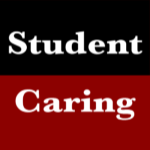Not every student is going to associate themselves with being a scientist. However, we all make observations, collect data and develop hypotheses every day just using our five senses. It is how we understand the world. For some students, gaining a deeper understanding of the world is done through art and artistic expression. Much like how individuals have different learning styles from one another, we also have different styles of communication that we are more receptive to than others.
The arts and humanities allow for a well-rounded, thorough understanding of scientific concepts that all students can appreciate — whether they consider themselves ‘naturally’ talented at math and science or not. Teachers can teach subjects from a project-based approach incorporating a healthy dose of artistic interpretation in order to get all students onboard with scientific concepts more naturally — rather than via the traditional subject-isolated approach.
Storytelling
Rather than trying to convey scientific findings to students in the form of graphs and data tables, some may benefit from digesting the information through a story. Understanding the background story of an experiment or piece of research will open up a new perspective by gaining a clearer picture of how or why the data was obtained. Sometimes a scientist’s background in why they felt the need to conduct the research they have done or their personal connection with the subject will engage the reader on a deeper level. Understanding the context, or the “why,” stimulates more personal investment in a student to understand the information at hand, as opposed to being told they need to simply read, interpret and draw conclusions from a data table.
Visual Arts
To draw the attention of an audience that is pulled to the visual arts, there are many scientists that believe that photography, beautifully crafted 3D models, and technology have a place in the classroom. Those of the younger generation can be spurred to engage with the use of video games, and Arizona State University is looking into how to implement them into their online courses. Many educators are utilizing technology and are encouraging students to design videos on the topic of study to share with their classmates to be more visually engaging. Graphics, such as telescopic imagery and infographics, are also filling a great need to portray information at an accelerated rate to accommodate the younger generation’s minds that are now used to receiving information within milliseconds thanks to the internet and social media.
Poetry
Using poetry can help artistically minded students to more deeply connect with concepts. It offers a way to convert scientific concepts into a new medium of communication. A graduate student at the University of Idaho currently has an ongoing experiment on her sixth grade students’ ability to synthesize scientific processes through the use of poetry. She would introduce an ecological concept with a simple explanation and follow up the lesson with sharing a poem written on the subject. She would then ask her students to construct their own poem to explain the ecological concept. Her results found that students retained the information and were able to reiterate the information to their fellow students faster using poetry as a tool for science communication as opposed to learning it via scientific text or lecture-style teaching.
This new style of teaching science could open up a new and interesting career pathway for educators. With the reduction in funding for public schools, this may also serve as a way to still expose children to art and humanities while teaching the standard science curriculum.

0 Comments